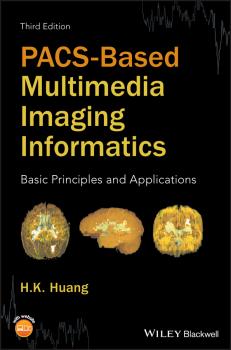ТОП просматриваемых книг сайта:















H. Huang K.
Список книг автора H. Huang K.Аннотация
Thoroughly revised to present the very latest in PACS-based multimedia in medical imaging informatics—from the electronic patient record to the full range of topics in digital medical imaging—this new edition by the founder of PACS and multimedia image informatics features even more clinically applicable material than ever before. It uses the framework of PACS-based image informatics, not physics or engineering principles, to explain PACS-based multimedia informatics and its application in clinical settings and labs. New topics include Data Grid and Cloud Computing, IHE XDS-I Workflow Profile (Integrating the Healthcare Enterprise Cross-enterprise Document Sharing for Imaging), extending XDS to share images, and diagnostic reports and related information across a group of enterprise health care sites. PACS-Based Multimedia Imaging Informatics is presented in 4 sections. Part 1 covers the beginning and history of Medical Imaging, PACS, and Imaging Informatics. The other three sections cover Medical Imaging, Industrial Guidelines, Standards, and Compliance; Informatics, Data Grid, Workstation, Radiation Therapy, Simulators, Molecular Imaging, Archive Server, and Cloud Computing; and multimedia Imaging Informatics, Computer-Aided Diagnosis (CAD), Image-Guide Decision Support, Proton Therapy, Minimally Invasive Multimedia Image-Assisted Surgery, BIG DATA. New chapter on Molecular Imaging Informatics Expanded coverage of PACS and eHR's (Electronic Health Record), with HIPPA compliance New coverage of PACS-based CAD (Computer-Aided Diagnosis) Reorganized and expanded clinical chapters discuss one distinct clinical application each Minimally invasive image assisted surgery in translational medicine Authored by the world's first and still leading authority on PACS and medical imaging PACS-Based Multimedia Imaging Informatics: Basic Principles and Applications, 3rd Edition is the single most comprehensive and authoritative resource that thoroughly covers the critical issues of PACS-based hardware and software design and implementation in a systematic and easily comprehensible manner. It is a must-have book for all those involved in designing, implementing, and using PACS-based Multimedia Imaging Informatics.
Аннотация
The definitive guide to PACS – now with more clinically applicable material In recent years, the field of picture archiving and communications systems—PACS—and image informatics has advanced due to both conceptual and technological advancements. This edition of PACS and Imaging Informatics: Basic Principles and Applications addresses the latest in this exciting field. In contrast to the previous edition, this updated text uses the framework of image informatics, not physics or engineering principles, to explain PACS. It is the only resource that thoroughly covers the critical issues of hardware/software design and implementation in a systematic and easily comprehensible manner. To strengthen and update the book, the author: Emphasizes clinical applications of PACS and integrates clinical examples throughout the text Reflects the many changes in the field, with new chapters on Web-based PACS, security, integrating the healthcare enterprise, clinical management systems, and the electronic patient record Uses the framework of imaging informatics to explain PACS, making the book accessible to those without advanced knowledge of physics, engineering, math, or information technology Explains how PACS can improve workflow, therapy, and treatment With the most systematic and thorough coverage of practical applications available, this text is the complete guide for all those involved in designing, implementing, and using PACS. Professionals in medical and allied health imaging informatics; radiologists and their technical staff; surgeons and oncologists and their teams; medical and electronic engineers; medical informaticians; and fellows, graduate students, and advanced undergraduates will all benefit from this valuable resource. «An excellent book for people involved in the design, implementation, or simply the operations of PACS and an appropriate textbook.» —From a review of the previous edition in IEEE Engineering in Medicine and Biology «The strength of the book lies in the vast experience of the author, who has implemented PACS at numerous institutions in the United States and abroad.» —From a review of the previous edition in Radiology


